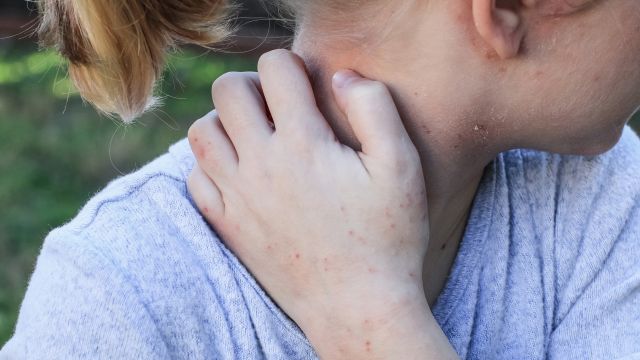Psoriasis is a common chronic inflammatory skin disorder that affects millions of people throughout the world. People of all ages have psoriasis, including nearly 1 percent of children.
There are several different types of psoriasis, which have a different appearance and cause different symptoms. Some types of psoriasis are more common among children, while other types are less common. Symptoms can also differ in appearance and location depending on a person’s age, and can also be mistaken for common skin rashes, such as diaper rash, cradle cap, and yeast infections.
Here, we look at the types of psoriasis that are common in children, what the symptoms look like, and why any new symptom should be evaluated by a healthcare provider.
Plaque psoriasis
Plaque psoriasis is the most common form of psoriasis among all ages groups. The symptoms and appearance of plaque psoriasis are what most people think of when they come across the term psoriasis—thickened plaques of inflamed skin that are red, scaled, and silvery. In children, these lesions tend to be smaller and less thickened, and commonly occur on the scalp and face, though they can occur on any area of the body.
Inverse psoriasis
This type of psoriasis is also common in children. It affects areas or the body where skin folds against skin, such as the groin and under the arms. This type differs in appearance from plaque psoriasis, and lesions are bright red and smooth.
Psoriatic diaper rash
Psoriasis lesions may develop on the skin covered by a diaper. This is also called napkin psoriasis. It can be mistaken for a diaper rash, but symptoms will not improve with typical diaper rash treatments. Lesions can look similar to inverse psoriasis—red, smooth, and lacking the scales of plaque psoriasis lesions.
Guttate psoriasis
After plaque psoriasis, guttate psoriasis is the second most common type of psoriasis. It is more common among children than adults. In many cases it is triggered by a viral or bacterial infection—strep throat is one example. Guttate psoriasis results in small lesions that are round in shape or shaped like drops. These lesions are red and scaly. The arms, legs, and trunk of the body are common areas where lesions appear. While these lesions often resolve in a few months, many patients who experience guttate psoriasis go on to develop plaque psoriasis.
Other types of psoriasis
Pustular psoriasis is characterized by pus-filled blisters and can be accompanied by pain and fever. These blisters can form on the hands and feet. They can also form a border or ring around reddened psoriasis lesions. Children can also experience nail psoriasis, which causes pitting, crumbling, and changes to the nails of the fingers and toes. Children can also have psoriatic arthritis, a type of arthritis that affects people with psoriasis.
Two types of psoriasis are life-threatening and require immediate medical care. One is generalized pustular psoriasis (GPP), a type of pustular psoriasis which causes large areas of the skin to become red, tender, dry and covered in pustules. The other type is erythrodermic psoriasis, which causes widespread inflammation—symptoms include reddening of the skin (it can have a burnt appearance) and shedding of skin in sheets.
Both GPP and erythrodermic psoriasis have a rapid onset and can also occur alongside one another. Symptoms include dehydration, fever, chills, fluctuations in body temperature, rapid heart rate, severe itching, and severe pain. Both are rare in children, but can occur.
Evolving symptoms and other skin conditions
Any new symptoms should be evaluated by your childhood’s healthcare provider. Psoriasis symptoms can change as a child gets older. Symptoms can also overlap with the numerous other skin conditions that can affect children, and other skin conditions can occur alongside psoriasis. While there is no cure for psoriasis, there are treatments for patients of all ages.






